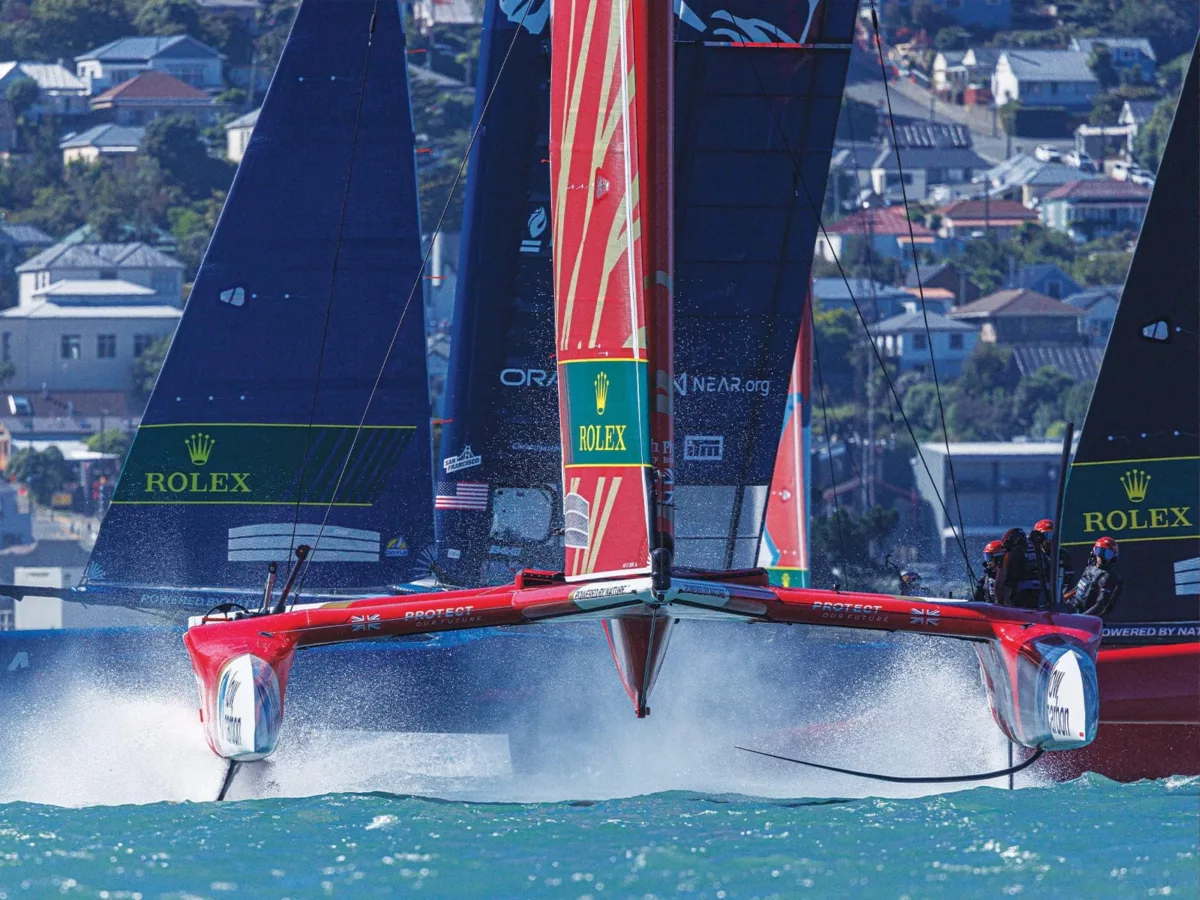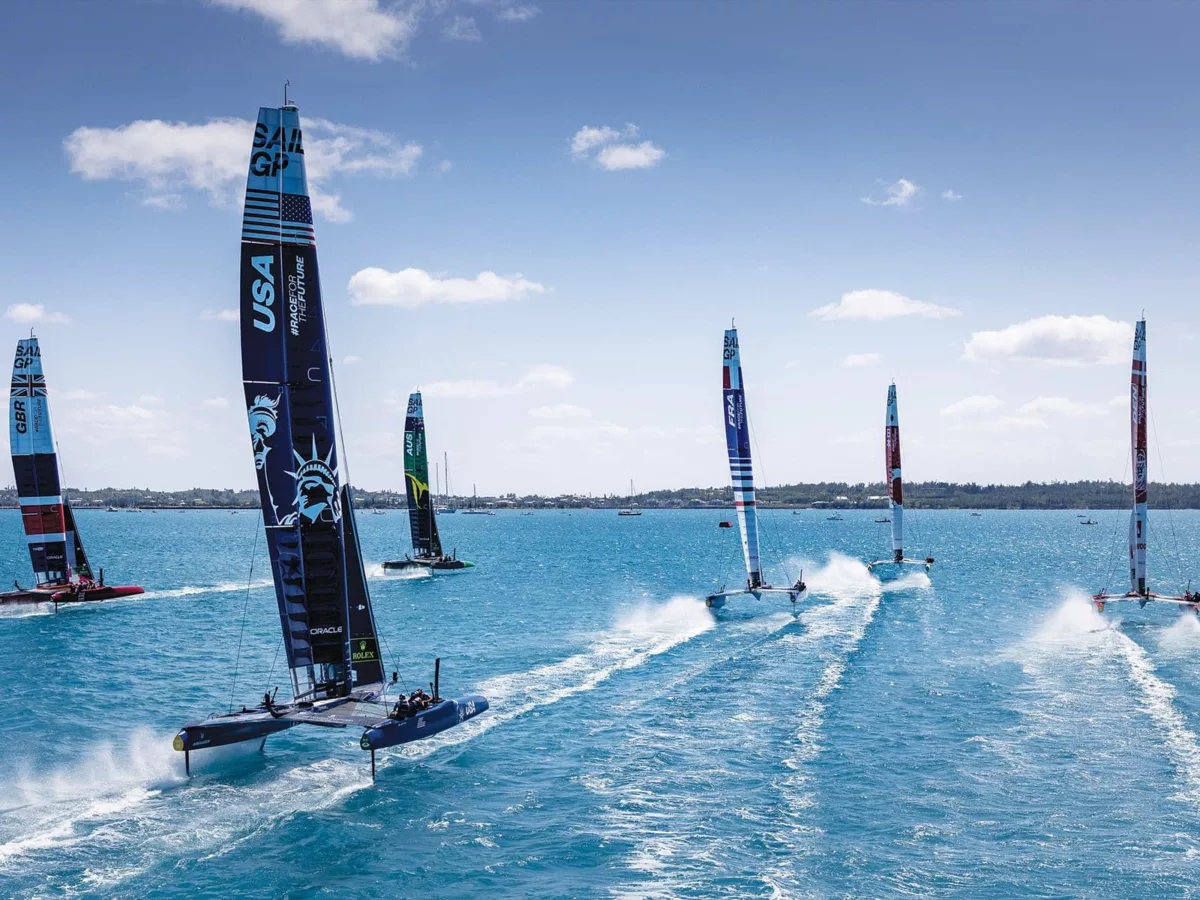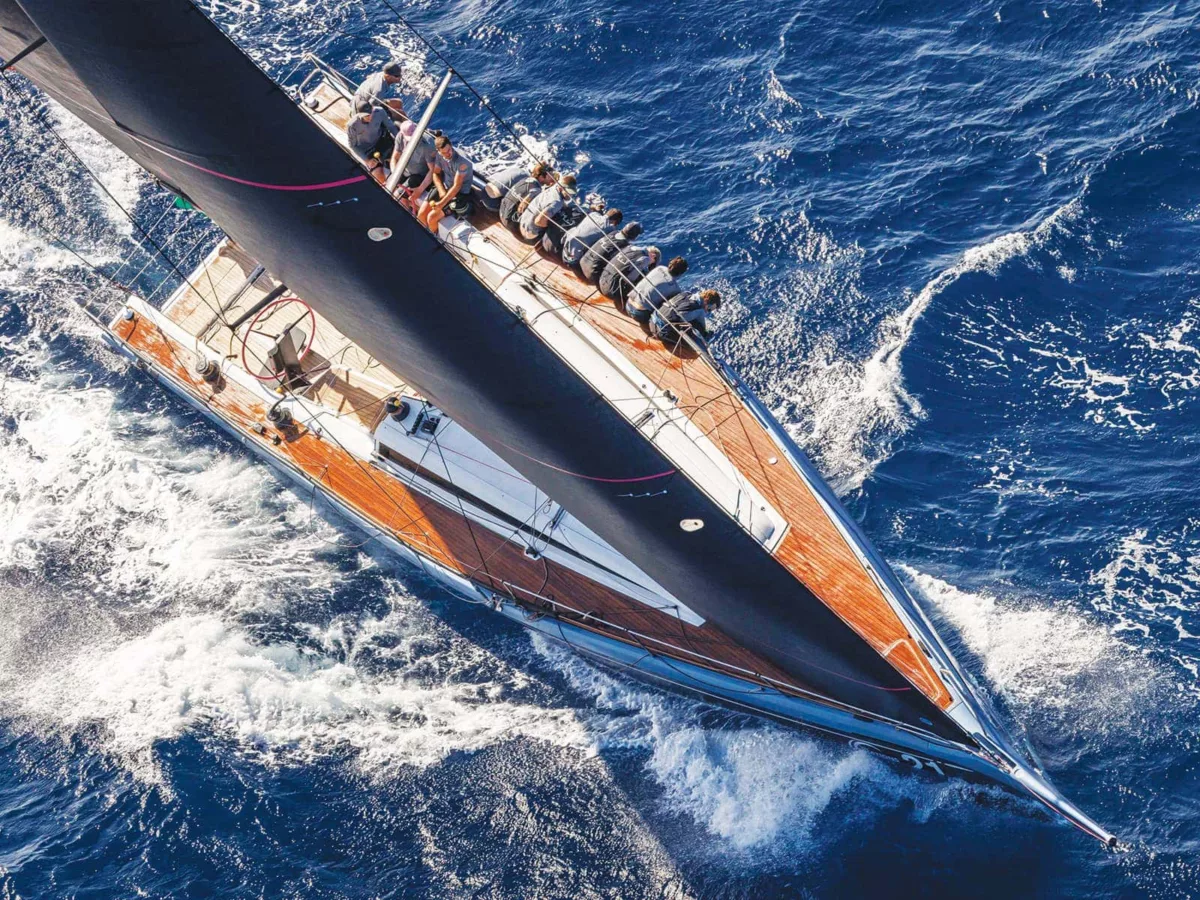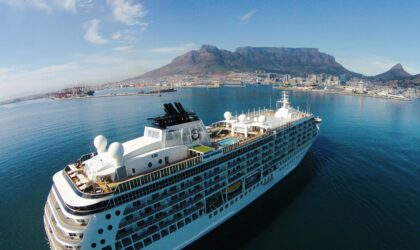It was 1996, a few months before his first Olympic gold in Atlanta. Brazilian sailing superstar Robert Scheidt was in Cape Town, earning his second World Championship title in a competition he remembers viscerally. ‘It was in Simon’s Town. I remember the cold waters, the possibility of meeting white sharks. It was wild, the sea quite rough. A lot of wind, a lot of current, a lot of waves.’
Scheidt, who always wears a silver necklace with a cross, and since his earliest races as a boy has carried a chess piece – a black knight – in his bag, has been sailing since he was five, starting on Sao Paulo’s Lake Guarapiranga with his father.
By age nine he had his first Optimist, a small, single-handed sailing dinghy made for children. Aged 11, he won his first South America championship; the following year he represented Brazil at the Optimist World Championship.
Crowned Rolex Sailor of the Year – sailing’s highest achievement – in 2001, he’s won nine World Championships and three Olympic medals in a Lazer, the single-handed Olympic-class boat he believes brings sailing down to basics: ‘It’s all about the sailor, reading the wind, making decisions, being physically and mentally prepared,’ he says.
Scheidt, now 50, says that while sailing is about meeting the forces of nature – wind, sea, weather – head-on, being a good sailor is about understanding those elements, knowing them well enough to be able to decide what to do next in order to win the race. ‘It’s a highly complex sport requiring physical prowess and the use of your intellect. There’s a lot of decision-making and planning ahead that makes it similar to chess, but you need to make decisions really quickly.’
A generation ago, the fastest sailboats were looking at speeds of around nine knots, perhaps 15 knots if they were in a real hurry. Nowadays, boats competing in events such as the America’s Cup, the world’s oldest surviving yacht race, literally fly above the water, at a pace much much faster.
Other key races on the international yachting calendar include the Rolex Giraglia, an offshore race from Saint-Tropez to Genova; the Rolex Fastnet Race, which is the biggest offshore race of the year and poses the challenge of navigating back and forth across the treacherous Celtic Sea; the Ocean Race, which goes around the entire planet; the Maxi Yacht Rolex Cup; the Rolex Middle Sea Race; and the gruelling Rolex Sydney Hobart Yacht Race across the Tasman Sea.
It’s unsurprising, perhaps that Rolex shows up – again and again – as a headline sponsor of the sport’s signature events. The timekeeping brand’s associations with sailing go back to when the watch manufacturer’s founder Hans Wilsdorf sought to specifically create timepieces able to withstand the rigors of seafaring. Rolex has enjoyed an unprecedented association with the sport for almost 70 years, supporting regattas, yacht clubs and many of the most prestigious and fiercely competitive races.

With its high-stakes competitiveness, though, it’s SailGP, another Rolex-partner event, that, since its inception in 2019, has been making a play as the ultimate spectator version of the sport. Surely the world’s fastest sailing league, analogous with Grand Prix motor racing, the year-round competition sees some of the greatest sailors on Earth competing at breakneck speeds – the event’s F50 catamaran can be pushed over 100 km/h, to around 55 knots.
At the frontline of this shift in gears, is Sir Ben Ainslie, five-time Olympic medallist and four-time Rolex World Sailor of the Year.
Ainslie, whose ‘intense battle’ with Scheidt at the Sydney Games in 2000 altered perceptions of just how competitive sailing can be, skippers the Great Britain SailGP crew.
In Sydney, 23 years ago, Ainslie’s fierce tactics earned him gold while sparking conversation around the aggressiveness of his racing strategy – manoeuvring of that sort had never before been seen at such a high-profile competition.
The ferocity of that race also inspired sailing’s younger generation, among them a teenager named Tom Slingsby who now captains SailGP’s Australia team, which has won all three previous seasons of the competition with its $1-million grand prize.
Having kicked off on Lake Michigan in Chicago in June, SailGP’s fourth season will see the league’s nine teams (up from six in 2019) racing in LA in July, Saint-Tropez and Taranto in September, in Spain from Andalucia to Cadiz in October, and then in the UAE, Sydney, Auckland, Bermuda, Canada and New York, before reaching San Francisco for the Grand Final next July.
Each event during the exhausting 12-month season involves two days of exhilarating action – five furiously contested fleet races culminating with a three-boat final.
Ainslie refers to the league as ‘a major milestone in the evolution of yachting’, thanks to boats that use ‘the most state-of-the-art technology’.
‘It’s the introduction of foils,’ Scheidt explains. ‘They can lift the boat so the hull doesn’t touch the water. In a sense, sailing is becoming kind of a flying sport.’
By raising the vessels above the water, drag is dramatically reduced. Such high-flying sci-fi action enables the twin-hulled catamaran – 15 metres long, weighing 2,400 kg, sometimes unstable – to reach phenomenal speeds.
There’s an evolving lingo, too. Manipulating the elevations and angles of the left and right hydrofoils centred between bow and stern is the ‘flight controller’ who lifts the boat higher or lower above the water. Higher is quicker, but sets the boat up for the risk of a nosedive, which is as worrying as it sounds.
Sails are now called wings and are built of carbon fibre with titanium fittings under a light plastic wrap. Wing trimming is handled by the wing trimmer who shapes the airfoil wing for on-the-go enhanced speed and stability. Up to a point, they’re only going to get quicker, say the engineers driving the technology behind the $6-million boats.
Managing all of this are the ‘drivers’, helmsmen such as Ainslie and Slingsby, who work the crews like choreographers coordinating an impromptu dance.
Some crew members liken the experience to playing a fast-moving video game, but with real-life consequences.

For spectators, it’s a thrilling peek at the seemingly futuristic possibilities of wind-powered boats. For the mixed-gender crews doing the work, there’s an intense interweaving of physical stamina and intellectual rigour. Crews are required to interpret technical data and react decisively to prevent mishaps.
With competition fierce, the boats are almost always within striking distance of each other. One tiny misreading of the elements, a fractional timing mistake or overlooked detail can mean losing a race – or worse. With such head-spinning speeds, there’s a very real possibility of nosediving, colliding, or crew members being sent flying by a wobbling boat.
SailGP’s catamarans are all identical – any equipment upgrades happen to all boats at the same time and everyone has access to everyone’s race data. With the playing field level it’s down to a crew’s know-how and performance.
Not to mention their sheer passion for being on the water, flying free.
Scheidt says sailing’s hold over those who do it has less to do with the technology and the competitiveness of the sport than with something far more fundamental. It’s the unprecedented sense of freedom, he says, ‘having the freedom to come and go and to enjoy the wind, the water, the elements of nature’.
He says this sense of sailing as a liberating force has been with him since the beginning. ‘Learning to manage the hard moments – capsizing, getting the water out of the boat, caring for your equipment… these elements make this sport unique. Ultimately, though, it is the freedom. Being able to manage my boat to take me in any direction I want to go.’
It is why, decades later, he is still sailing, why he continues to express his desire for freedom on the water. ‘Sailing is a way of life,’ he says. ‘Once you are a sailor you’ll be a sailor until the day you die.’
by Keith Bain





